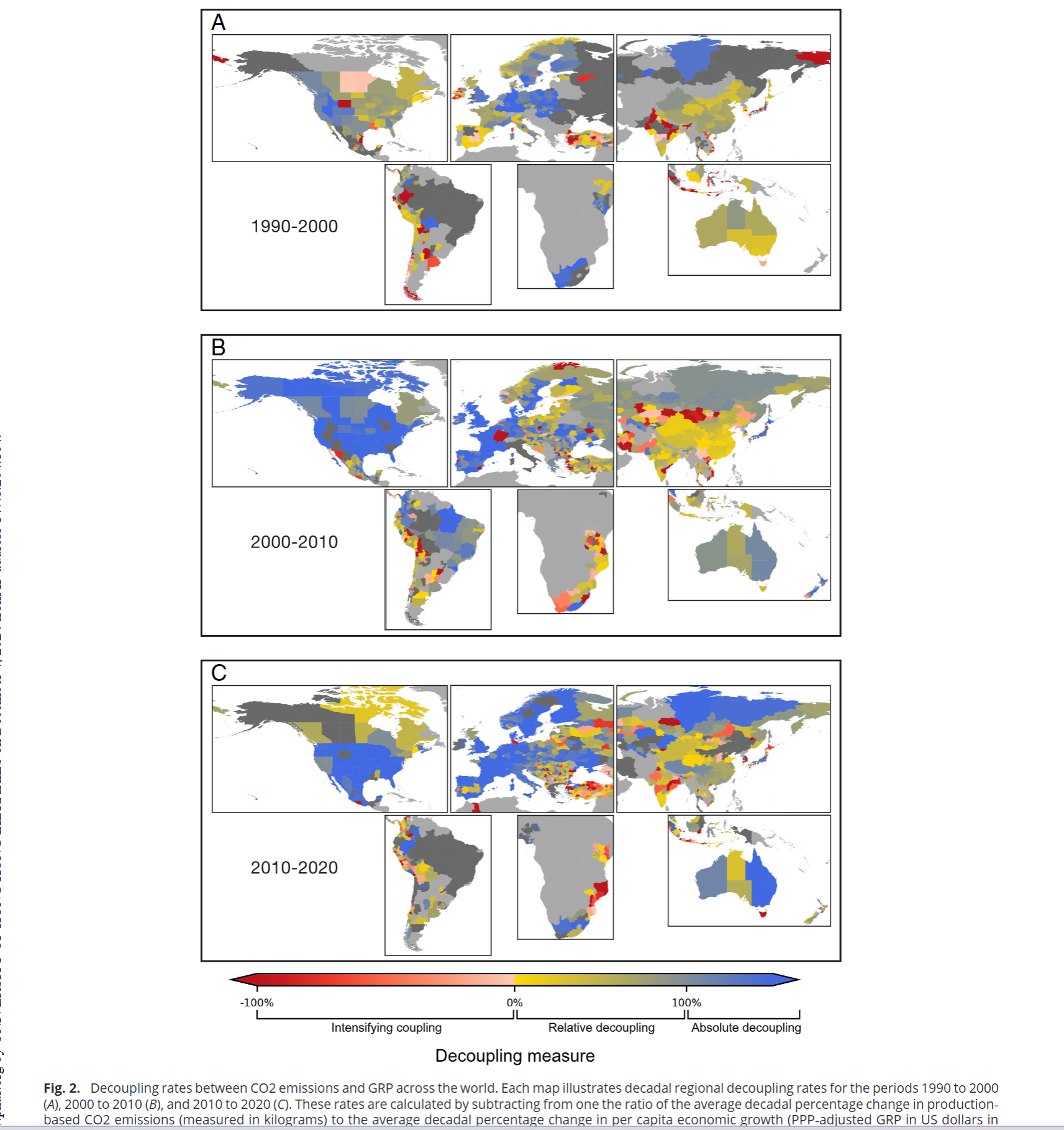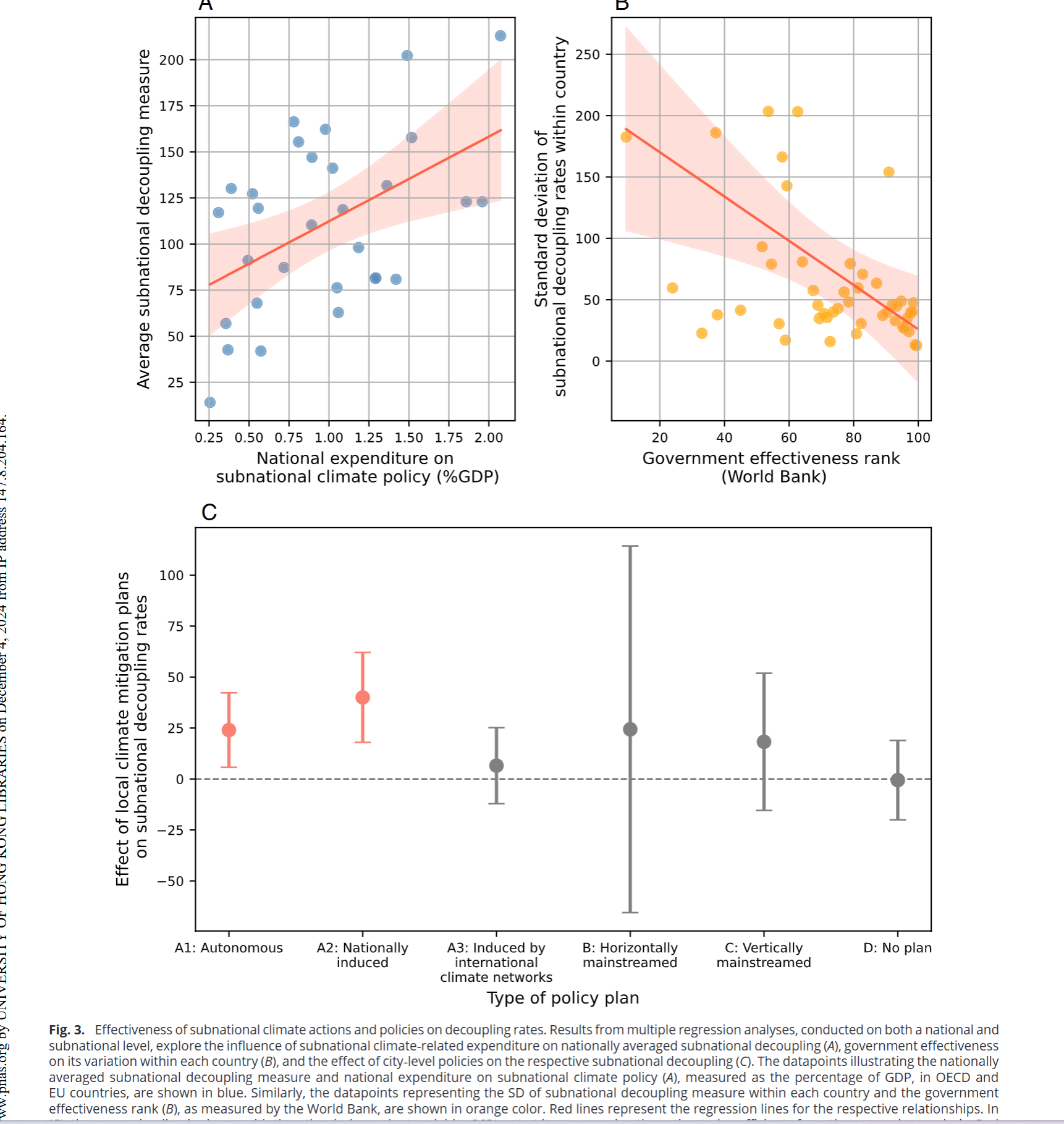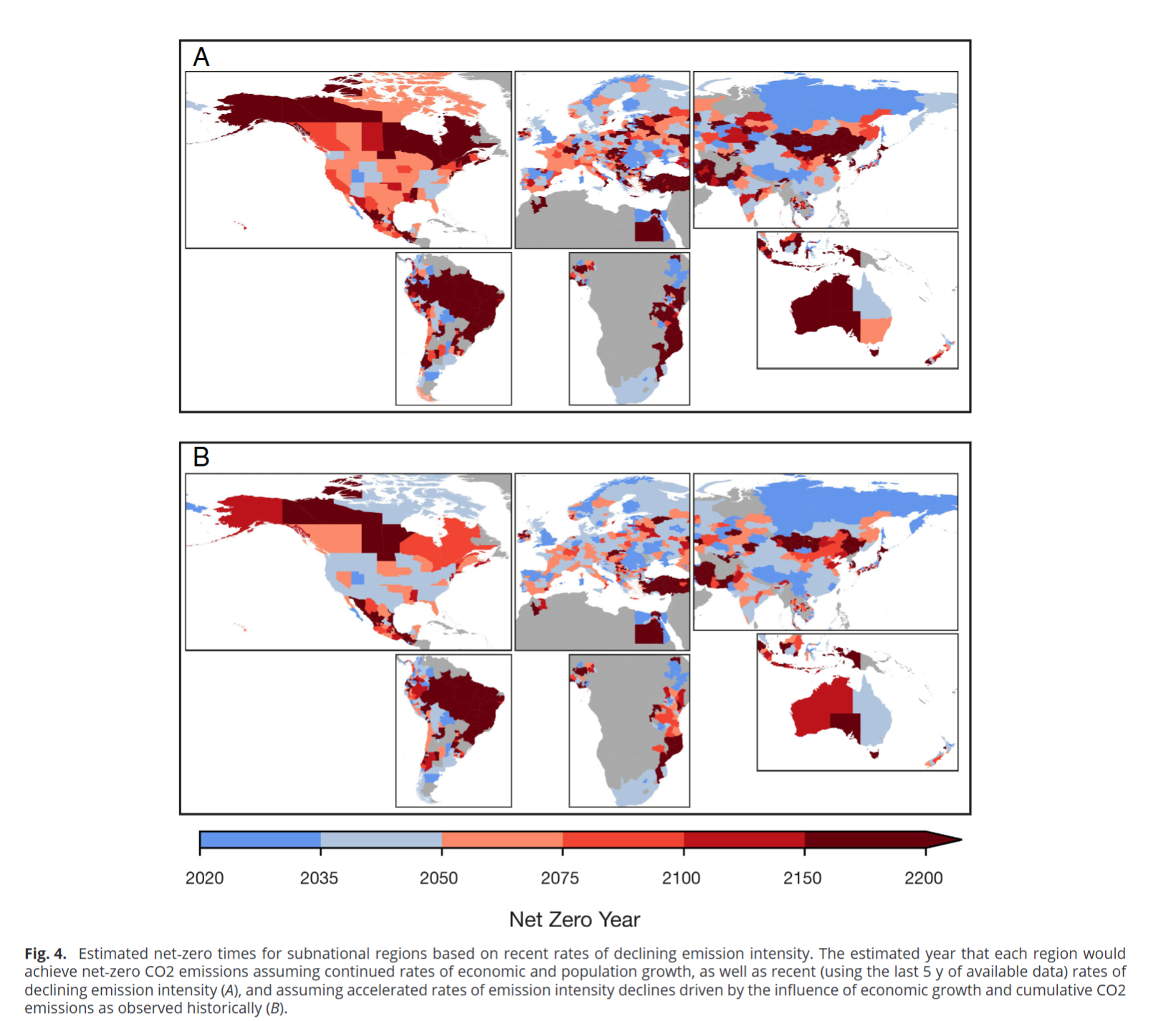Objective:
- decouple economic output from production-based CO2 emissions on a subnational level for the last three decades
Case:
Methodology:
- OLS
- Decoupling rate
- Prediction
Data Source
- Subnational data: DOSE
- Carbon emission: EDGAR
- Cumulative CO2 emissions: National fossil carbon emissions
- Policy: OECD and World bank
Findings:
- Europe consistently outperforms other regions with a significant number of its regions sustaining a continuous decoupling trajectory

- 29% achieve absolute decoupling, accounting for 44 and 38% of historical CO2 emissions and GRP, while 52% accomplished relative decoupling

- CRegions where cities have implemented or announced any type of local climate mitigation plans typically exhibit higher levels of decoupling
- Nationally mandated local plans are more effective than those autonomously develped by urban authorities

- Deviations in decoupling rates within countries are found to be typically larger than differences between them
- Higher deviations of decoupling within countries are generally observed in contries characterized by weaker governance, measured by World Bank’s government effectiveness index

- Regions with more developed economies, characterized wigh higher income and accumulated CO2 emissions, exhibit a greater level of decoupling between economic growth and emissions
Coding Reference:




